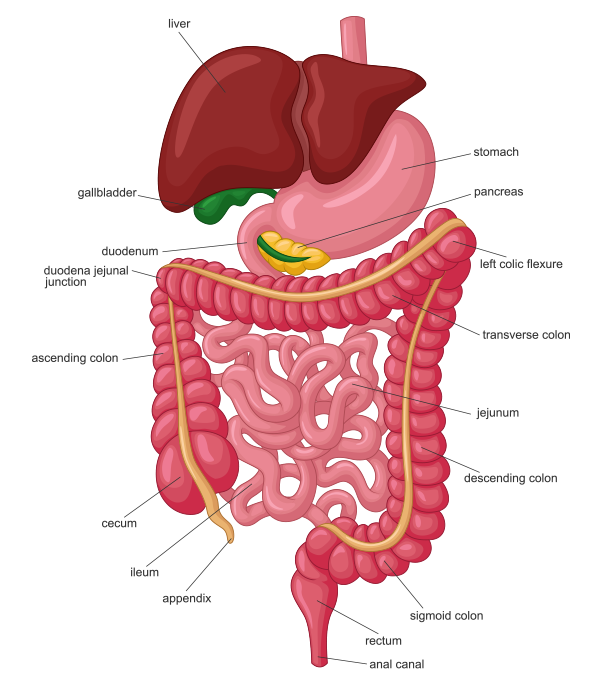
Services

Of all the different systems in your body, the gastrointestinal system is one of the largest and most complicated. This system of organs (i.e. the stomach, liver, gallbladder, intestines, and pancreas) supports digestion and provides a myriad of other functions.
So when a person experiences gastrointestinal disorders, it can create a great deal of worry, anxiety, and discomfort. That’s where we come in.
Dr. Abousaif understands what you’re feeling, and offers a wide variety of minimally invasive, advanced techniques to successfully identify and manage complex GI conditions. He is dedicated to creating a comfortable medical experience, where you’re treated with respect, encouraged to ask questions, and participate actively in your care.
Dr. Abousaif has an outstanding reputation for providing highly personalized service, which is sensitive to the individual needs of each patient.
Advanced Procedures
Dr. Abousaif is specially trained in the most advanced minimally invasive and non-invasive techniques, which help manage and treat gastrointestinal conditions.
Biliary Stent Placement
In this procedure, a biliary metal stent (also known as a bile duct stent) is inserted into a blocked or partially blocked bile duct in order to hold it open. Once in place, the stent is designed to expand and open the channel so fluids can continue to move to the intestine.
Colon Cancer Prevention/Screening
Colon cancer screenings are performed to detect pre-cancerous polyps and other early cancers in the large intestine. This type of screening can find problems that can be treated before cancer develops or spreads. Regular screenings may reduce the risk of death and complications caused by colorectal cancer. There are several different ways to screen for colon cancer, including stool tests and colonoscopies.
Colonic Stent Placement
When a colon blockage is indicated, Dr. Abousaif may recommend placing a stent in your colon to expand it and open the bowel blockage. The stent will be placed using an endoscope (a long, narrow camera) that is inserted through your rectum into your bowel. This allows him to look directly into the are to be treated and correctly place the stent. Once placed, the stent will expand and the symptoms of blockage (i.e. bloating, nausea, constipation, pain) should be relieved.
Colonoscopy
This is a safe, non-surgical procedure that allows us to evaluate the lower part of your gastrointestinal tract, including the end of your small intestine, colon, rectum, and anus. A colonoscopy not only screens for colon cancer, but also to investigate a variety of lower gastrointestinal symptoms and disorders.
Endoscopic Variceal Ligation (Banding)
This procedure is used to treat enlarged veins in the esophagus – the tube connecting the throat to the stomach. If left untreated these esophageal veins can spontaneously rupture and cause severe bleeding. The procedure is performed by placing a scope in the mouth down to the esophagus. When found, tiny elastic bands are placed around the enlarged veins to tie them off so they can’t bleed. The banded veins are then eventually sloughed after a few days and the esophagus is much less likely to bleed after healed.
Esophageal Motility Study
An esophageal motility study is a diagnostic test that will evaluate the function of your esophagus. During the procedure, a catheter containing pressure sensors will be passed through your nose, down your esophagus, and into your stomach. It measures the rhythmic muscle contractions that occur in your esophagus when you swallow, as well as measuring the force and coordination of esophageal muscles as they move food to your stomach. The results of this study will help Dr. Abousaif determine a diagnosis and the best treatment for you.
Esophagogastroduodenscopy (EGD)
EGD is an endoscopic procedure that allows Dr. Abousaif to examine your esophagus, stomach, and duodenum (part of your small intestine). EGD is used to evaluate a number of digestive disorders. It is a popular diagnostic option because patients generally tolerate it well and it causes minimal discomfort.
Esophageal Stent Placement
In this procedure, Dr. Abousaif places a tube in your esophagus to open a blocked area so you can more easily swallow solids and liquids. During the procedure, the surgeon places a long, thin catheter down the back of your mouth and into your esophagus. Next, he places a stent over the catheter in the correct position across the blockage. The stent expands against the walls of your esophagus, giving support. The catheter is then removed, leaving the stent in place.
Flexible Sigmoidoscopy
A flexible sigmoidoscopy is an exam performed to evaluate the lower part of the large intestine (colon). During the exam, a thin, flexible tube is inserted into the rectum. A tiny video camera at the tip of the tube allows Dr. Abousaif to view the inside of the rectum and most of the colon — about the last two feet (61 centimeters) of the large intestine. If necessary, tissue samples (biopsies) can be taken through the scope during a flexible sigmoidoscopy exam.
Hemorrhoid Electrotherapy (HET)
Hemorrhoids are swellings containing enlarged blood vessels that are found inside or around the anal canal. In HET, a probe is used to apply an electric current to the hemorrhoids, which causes them to shrink.
Percutaneous Endoscopic Gastrostomy Placement (PEG)
PEG is an endoscopic medical procedure in which a tube is passed into a patient’s stomach through the abdominal wall, most commonly to provide food, liquids, and/or medications when oral intake isn’t possible or swallowing is difficult.
Percutaneous Endoscopic Gastrostomy Placement (PEG)
PEG is an endoscopic medical procedure in which a tube is passed into a patient’s stomach through the abdominal wall, most commonly to provide food, liquids, and/or medications when oral intake isn’t possible or swallowing is difficult.
Single Balloon Enteroscopy (SBE)
This procedure lets Dr. Abousaif see images of the patient’s small intestine in real time. For this procedure, the endoscope has an overtube attached with a balloon at the tip that that can be inflated and deflated when inside the intestine. This allows Dr. Abousaif to reach areas of the small intestine not easily reached by traditional endoscopy and colonoscopy. The endoscope can either be inserted through the patient’s mouth or rectum. The patient receives sedation and feels no discomfort during the procedure.
Small Bowel Enteroscopy
Since evaluation of the small bowel is difficult due to its length and location, a longer scope is necessary for effective visualization, therapeutic and interventional therapies. In some cases, balloons are fitted onto the end of the scope and inflated to examine the more inaccessible areas of the small bowel. This alternative to the more invasive open-abdomen procedure is used to help in the location of gastrointestinal bleeding as well as initial diagnosis of conditions such as Crohn’s disease, celiac disease, and Irritable Bowel Syndrome.
Solesta Injections
These injections are used for the treatment of bowel control problems (also referred to as accidental bowel leakage, or fecal incontinence) in patients 18 years and older who have tried and failed other “conservative” therapies such as changes in diet, fiber therapy, and medications. Solesta is a gel composed of naturally made materials similar to the natural starches, sugars, and tissue in your body. Solesta is an option after conservative methods have failed, but before you consider undergoing surgery.
Upper Endoscopy
This is a procedure Dr. Abousaif performs so he can directly visualize the lining of the esophagus, stomach, and first part of the small intestine (duodenum), using a flexible scope with a camera and a light on the end of it. The scope is passed through the mouth while the patient is sedated.
Conditions Treated
As one of the area’s leading gastroenterologists, Dr. Abousaif treats a wide range of conditions, and approaches each patient with expertise, compassion, and experience.
– Acid Reflux
– Ambulatory pH Study (Bravo)
– Barret’s Esophagus
– Biliary Stent Placement
– Bleeding in the Digestive Tract
– Bloating
– Celiac Disease
– Colon Cancer Prevention/Screening
– Colon Gas & Flatus Prevention
– Colonoscopy
– Colonic Stent Placement
– Constipation
– Coughing
– Crohn’s Disease
– Diarrhea
– Diverticulosis & Diverticulitis
– Gastritis
– Gastroparesis
– GERD – Reflux
– Pylori Infection
– Hemorrhoids
– Heartburn
– Hoarseness
– Irritable Bowel Syndrome (IBS)
– Indigestion
– Inflammatory Bowel Diseases (IBD)
– Non-Alcoholic Fatty Liver Disease
– Percutaneous Endoscopic Gastrostomy Placement (PEG)
– Small Bowel Enteroscopy
– Ulcerative Colitis

